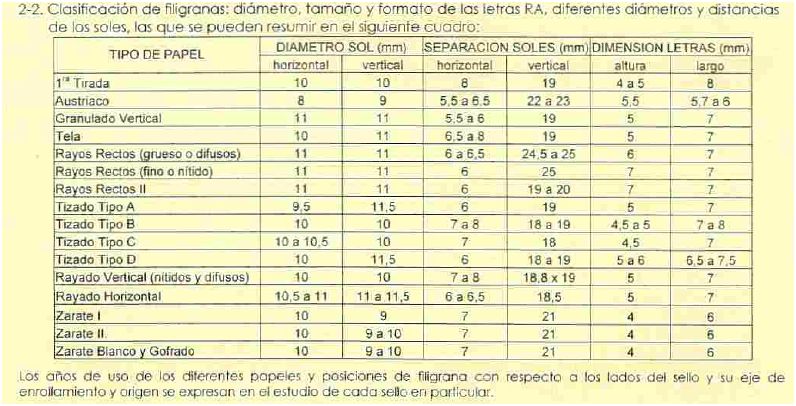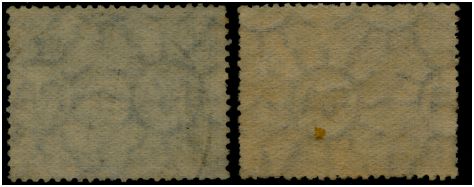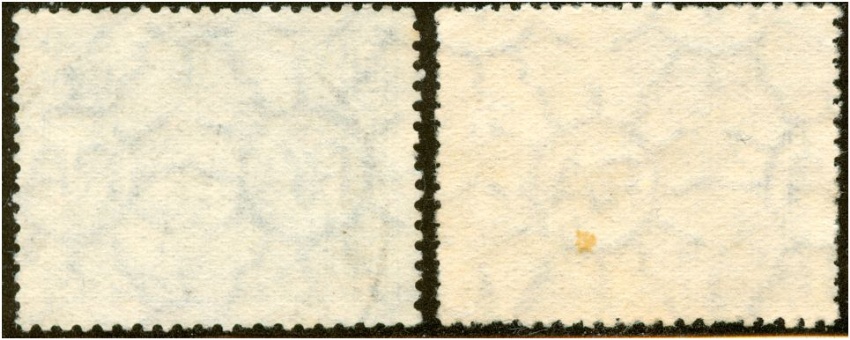The table made by mr Moscatelli gives a good survey of what measurements have been made of the PyR I stamps.

I have already stated that the measurements of the distances "between" do not guarantee enough accuracy as the thickness of the outlines interfere....
I prefer to have a measurement of the distance between the hearts/centres of the sun between 2 rows of AЯ or rather between alternate rows. Along the line of AЯ the distance between the hearts of 2 adjacent suns or rather 2 alternate suns.
Somehow, when the paper manufacturer did receive the order to make paper for the Argentinean Post, the specifications should have been clear and easy to understand. Horizontal distances (heart-to-heart) and vertical distances (heart-to-heart) were certainly part of those specifications, NOT diagonal distances .....
Taking the Moscatelli table serious we may see that most horizontal alternate heart-to heart distances amount to 34-36mm OR 28mm [Austriaco] and 31 [Tizado A]. Maybe in the specifications we had 35mm and 30mm???
The vertical distances are not see easy to calculate. The 25mm are the exceptions! And when I do my own measurements i will have either - between alternate rows - circa 30mm or 35mm!!!
And this seems to me the measurements we should take for default - and see everything else as a normal spread...
GOOGLE:
La mesa hecha por el Sr. Moscatelli da una buena visión de lo que las mediciones se han hecho de la I PyR sellos.
Ya he dicho que las mediciones de las distancias "entre el" no garantizan la suficiente precisión como el grosor de las líneas interferir ....
Yo prefiero tener una medición de la distancia entre el corazón y centros del sol entre las 2 filas de AЯ o más bien entre las filas alternas. A lo largo de la línea de AЯ la distancia entre los corazones de los 2 soles adyacentes o más bien 2 soles alternes.
De alguna manera, cuando el fabricante de papel ha recibido la orden de hacer el papel para el Post argentino, el pliego de condiciones debería haber sido claro y fácil de entender. Las distancias horizontales (de corazón a corazón) y las distancias verticales (de corazón a corazón) son sin duda parte de las especificaciones, las distancias no diagonal .....
Tomando la tabla Moscatelli graves, podemos ver que el corazón de la mayoría de los suplentes horizontal a la cantidad distancias corazón a 34-36mm o 28mm [Austriaco] y 31 [Tizado A]. Tal vez en las especificaciones que teníamos de 35 mm y 30 mm???
Las distancias verticales no se ve fácil de calcular. El 25mm son las excepciones! Y cuando hago mis propias mediciones tendré bien - entre las filas alternas - alrededor de 30mm o 35mm!
Y esto me parece que las medidas que debe tomar para que por defecto - y todo lo demás como una extensión normal ...



